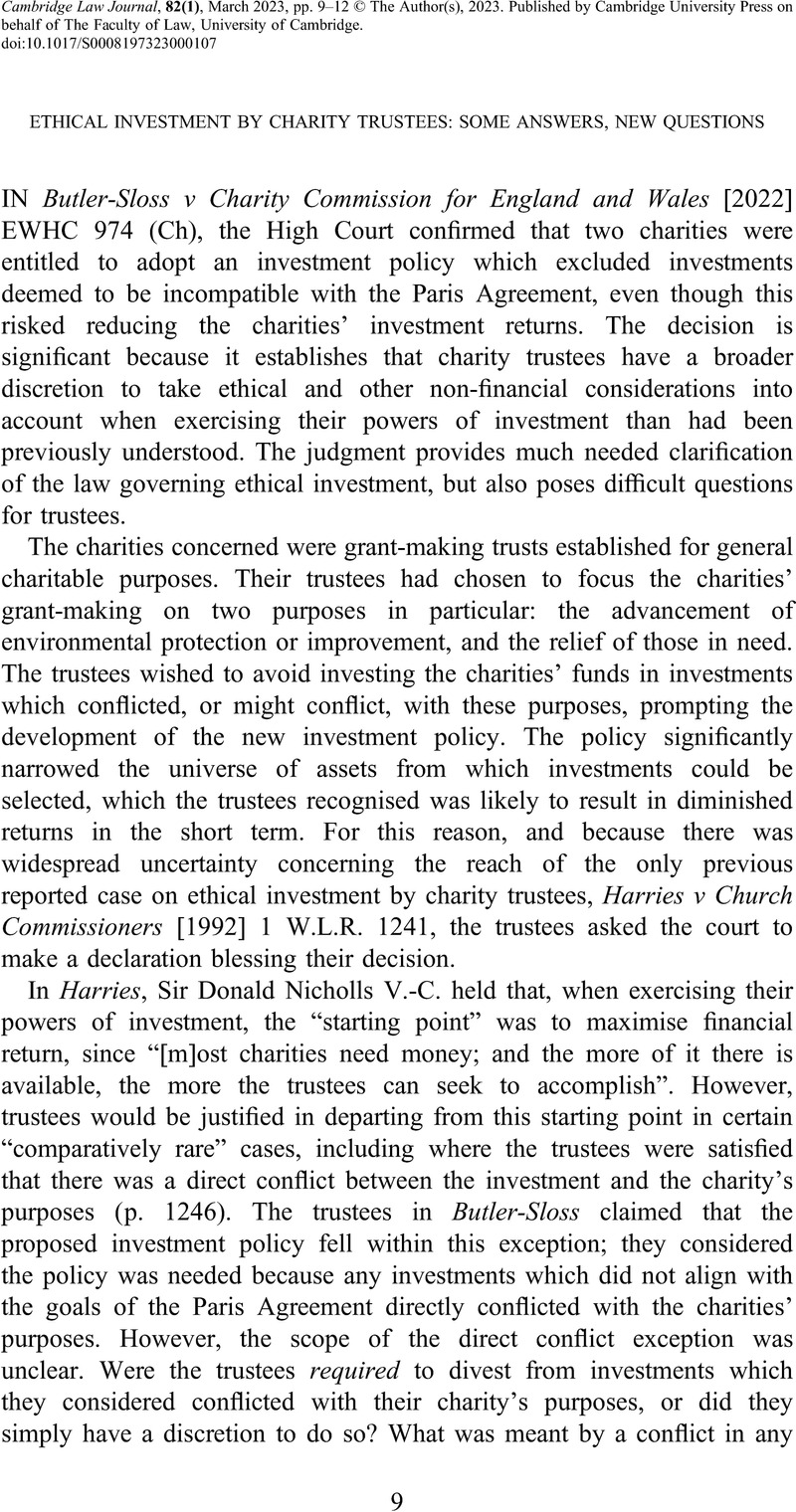No CrossRef data available.
Article contents
ETHICAL INVESTMENT BY CHARITY TRUSTEES: SOME ANSWERS, NEW QUESTIONS
Published online by Cambridge University Press: 26 April 2023
Abstract
An abstract is not available for this content so a preview has been provided. Please use the Get access link above for information on how to access this content.

Information
- Type
- Case and Comment
- Information
- Copyright
- Copyright © The Author(s), 2023. Published by Cambridge University Press on behalf of The Faculty of Law, University of Cambridge

